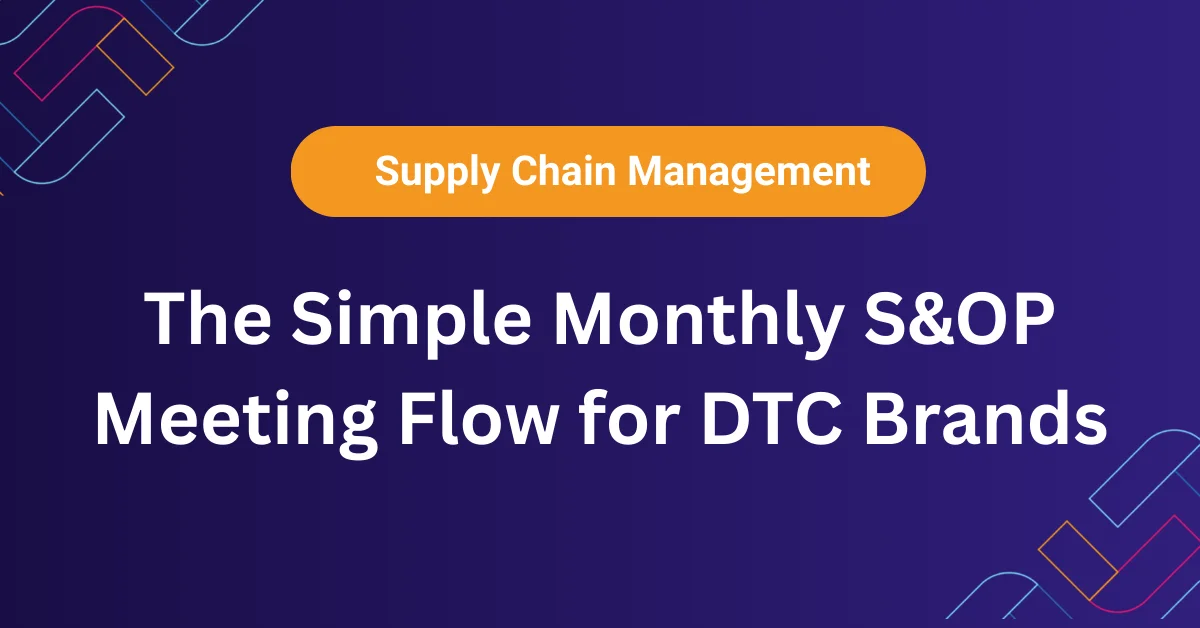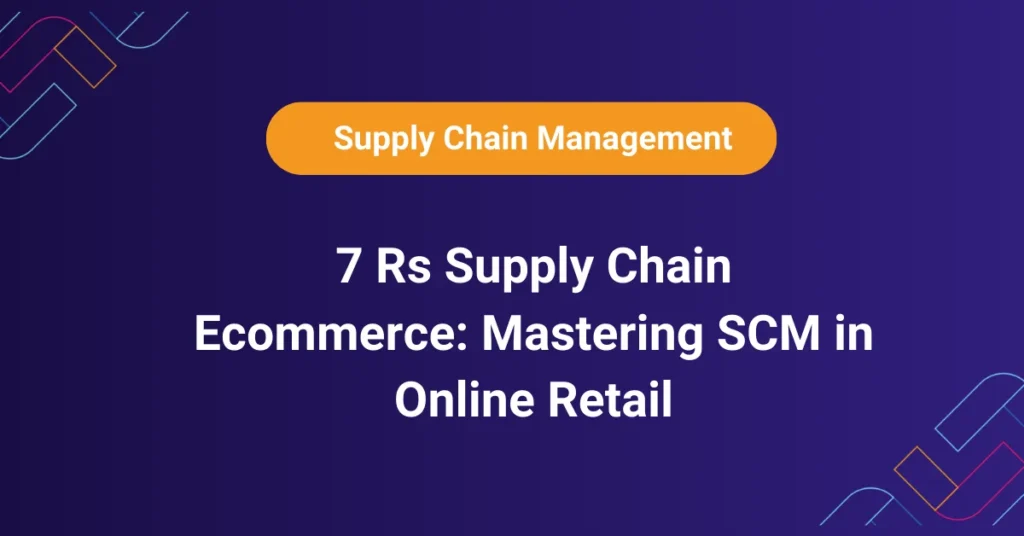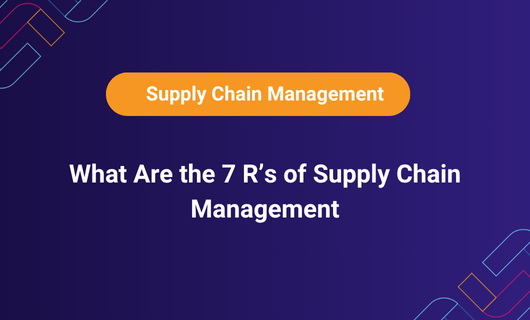DTC brands operate in a uniquely fast-paced environment. You’re closer to your customers than traditional retailers, but you also bear the entire burden of inventory risk and fulfillment. Without a monthly S&OP cadence supported by a robust SAP supply chain approach, you’re flying blind.
The High Cost of Misalignment: Marketing launches a 30% off site-wide sale without checking inventory levels, causing a stockout on key SKUs and angry customers. Finance faces a massive purchase order to cover new retail partners. Operations holds obsolete inventory from a failed product launch.
From Reactive to Proactive: S&OP flips the script. Instead of reacting to problems, you anticipate them. You use data to make decisions a quarter ahead, not a week behind. This is how you protect your margins, safeguard customer experience, and scale profitably.
A well-oiled S&OP for DTC brands process is your strategic advantage, transforming operational guesswork into a predictable engine for growth.
What is S&OP and why does it matter for DTC?
ERP SCM in Sales and Operations Planning (S&OP) is an integrated business management process that aligns a company’s strategic plans with its operational capabilities. For a DTC brand, this means creating a unified plan that balances what you expect to sell (sales & marketing forecast), what you can make and buy (supply plan), and what it all means for your financial health (financial plan). It matters because it is the single most effective process for eliminating internal friction, reducing inventory costs, and ensuring you never miss a revenue opportunity due to operational failure.

Who should attend S&OP meetings?
The monthly S&OP meeting is a cross-functional gathering of decision-makers. Core attendees typically include:
CEO/Founder: Provides strategic direction and casts the final vote on tied decisions.
Head of Marketing/Demand Generation: Presents the demand forecast and planned campaigns.
Head of Sales/E-commerce: Shares sales data, site traffic trends, and conversion metrics.
Head of Operations/Supply Chain: Presents inventory levels, supplier capacity, and logistics capabilities.
Head of Finance/CFO: Translates the operational plan into financial terms (cash flow, P&L impact).
The Key People and Roles in Your S&OP Rhythm
An S&OP process is only as strong as the people in it. Clarifying roles is the first step to an effective meeting.
Process Owner (Often Head of Operations/Supply Chain): This person owns the calendar, prepares the agenda, runs the meetings, and follows up on action items. They are the facilitator and keeper of the rhythm.
Demand Planner (Often Head of Marketing/Merchandising): Responsible for building the unconstrained demand forecast based on historical data, marketing plans, seasonality, and growth ambitions.
Supply Planner (Often Head of Operations/Procurement): Responsible for translating the demand forecast into a feasible supply plan, considering lead times, supplier capacity, and warehouse constraints.
Financial Analyst (Head of Finance): Responsible for modeling the financial impact of the proposed plan on revenue, margins, cash flow, and inventory levels.
The Simple Monthly S&OP Meeting Flow for DTC Brands
Your monthly cadence is broken into phases, happening over one to two weeks. This prevents the meeting from becoming a chaotic, all-day event.
Week 1:
Data Gathering & Pre-Work
Activity: Each department gathers its data. Marketing finalizes the upcoming month’s campaign calendar. Operations updates inventory reports and supplier lead times. Finance reviews last month’s P&L.
Output: A pre-meeting packet is distributed to all attendees 48 hours before the review meeting.
Demand Review Meeting
Leader: Head of Marketing.
Focus: Review the historical forecast accuracy. Present the new, unconstrained demand forecast for the next 3-6 months. Discuss assumptions behind the forecast: upcoming marketing campaigns, new product launches, seasonality, or market trends.
Goal: Achieve consensus on a single demand number that the company will plan against.
Supply Review Meeting
Leader: Head of Operations.
Focus: Present the current inventory position. Review the supply plan needed to meet the consensus demand forecast. Identify any gaps or constraints: Can suppliers keep up? Is there enough warehouse space? Are there any shipping delays to factor in?
Goal: Create a feasible supply plan that supports the demand plan, or identify where they are misaligned.
Week 2:
Pre-S&OP Meeting
Leader: Process Owner.
Focus: The Operations and Finance leads meet to reconcile the demand and supply plans. They develop scenarios (“what-if” analyses) to present solutions for any gaps. For example, “If we run this promo, we will stock out unless we air freight 500 units, which will cost $X and reduce margin by Y%.”
Goal: Prepare a finalized, cross-functional plan and a set of clear recommendations for the executive team.
Executive S&OP Meeting
Leader: CEO/Founder.
Focus: Review the recommended plan from the Pre-S&OP meeting. Make trade-off decisions between demand, supply, and financial goals. Approve the final operating plan for the upcoming period.
Goal: Leadership signs off on one unified plan that everyone is committed to executing.
In the Pre-S&OP meeting, use ecommerce inventory forecasting to make trade-off decisions between demand, supply, and financial goals. Approve the final operating plan for the upcoming period.
Goal: Leadership signs off on one unified plan that everyone is committed to executing.

Want a free Supply Chain map?
Critical Inputs and KPIs for Your S&OP Process
Your S&OP is fueled by data. These are the non-negotiable inputs and Key Performance Indicators (KPIs) you must track.
Key Inputs:
Demand Side: Historical sales data, upcoming marketing calendar, website traffic forecasts, customer pre-order data, product launch plans.
Supply Side: Finished goods inventory levels, raw material inventory, supplier lead times and capacity, production schedules, warehouse capacity.
Financial Side: Target margins, cash flow projections, capex constraints, cost of goods sold (COGS) data.
What KPIs belong in S&OP?
The most important KPIs to review monthly are Forecast Accuracy (measuring how good your predictions are), Inventory Days of Supply (ensuring you have the right amount of stock, not too much or too little), Supplier On-Time In-Full (OTIF) Rate (measuring supply reliability), and Plan vs. Actual Revenue (tracking the overall effectiveness of the plan). These metrics tell you the health of your planning process.
Decisions, Escalations, and Scenario Planning
The ultimate goal of S&OP is to make better decisions. Common decisions made in the executive meeting include:
Approving or delaying a marketing campaign based on inventory constraints.
Authorizing a higher-cost shipping method to avoid a stockout.
Deciding to discontinue a slow-moving SKU.
Greenlighting a capital expenditure for new warehouse space.
Adjusting financial targets based on operational realities.
Escalation Path: If a consensus cannot be reached in the Pre-S&OP meeting, the issue—with clear options and recommendations—is escalated to the executive S&OP meeting for a final decision.
How do we handle supplier constraints?
Supplier constraints are a core topic in the supply review. The process involves first quantifying the gap (e.g., “We need 10k units, but the supplier can only provide 7k”). Then, the team runs scenarios: Can another supplier be sourced? Can we prioritize the constraint for our highest-margin products? Can we communicate the delay to marketing to adjust campaigns? The chosen scenario is then presented to leadership for a decision.
What is the difference between S&OP and IBP?
S&OP (Sales & Operations Planning) is primarily focused on aligning tactical sales forecasts with operational supply plans over a 3-18 month horizon. IBP (Integrated Business Planning) is its strategic evolution, incorporating a longer-term strategic plan (24+ months) and more deeply integrating financial outcomes, product portfolio reviews, and strategic initiatives into the monthly cycle. Think of S&OP as the foundation for IBP.
How do marketing promos feed the plan?
Marketing promotions are a critical input to the demand forecast. The marketing lead must provide the S&OP process with a finalized calendar of all planned promotions—including the expected uplift percentage, duration, and targeted products—at least one full month before the promo goes live. This allows the supply team to model the inventory impact and secure stock, preventing a revenue-driving promo from becoming an operational nightmare.
What templates keep the meeting tight?
A standardized template is crucial for efficiency. Your pre-meeting packet should include:
A One-Page Executive Summary: Highlighting the key recommendations, gaps, and decisions needed.
Demand Review Dashboard: Showing historical forecast vs. actuals and the new forecast.
Supply Review Dashboard: Showing inventory health (by ABC classification), key supplier constraints, and proposed supply plan.
Financial Impact Statement: A simple P&L projection based on the plan.
Action Item Log: A running list of decisions and owners from previous meetings to ensure follow-through.
How do we track decisions month to month?
The single most important template is the Action Item Log. This is a simple table stored in a shared drive (e.g., Google Sheet) that includes the Decision/Action Item, the Owner, the Due Date, and the Status. The first agenda item of every S&OP meeting is to review the open actions from the previous month. This creates accountability and ensures nothing falls through the cracks.
Frequently Asked Questions
It's a monthly meeting rhythm where your company’s leaders align on a single plan for what you’ll sell, how you’ll supply it, and what it means for your money. It's designed to eliminate internal miscommunication and operational surprises.
Not at all. In fact, it’s more critical for small teams where miscommunication is easy. A simple S&OP rhythm prevents costly mistakes and ensures your limited resources are focused on the right priorities from the start.
The biggest mistake is not following up on decisions. Holding the meeting is only step one. Assigning clear owners and deadlines for every action item and reviewing them at the next meeting is what creates tangible results.
Ready to Replace Chaos with Confidence?
Implementing a disciplined S&OP for DTC brands rhythm is how you protect your vision and scale it profitably. It ensures your entire team is rowing in the same direction. Stop letting operational surprises dictate your growth. Start building your rhythm today.
Talk to a Supply Chain Expert for a free consultation and get a customizable S&OP template to kickstart your process.





